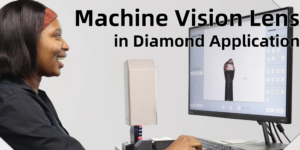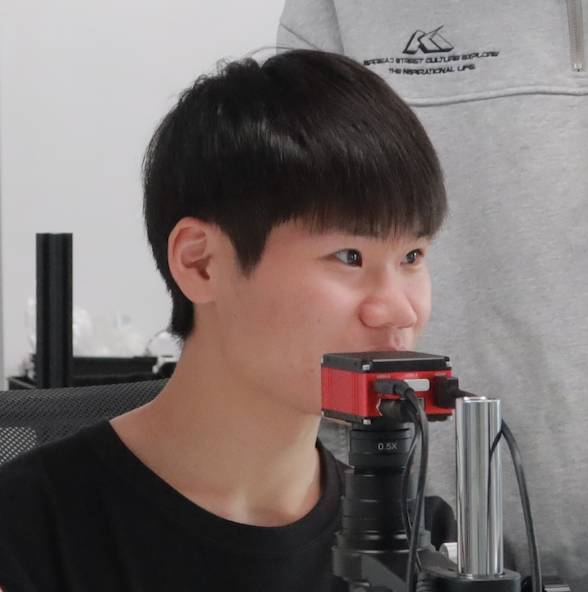After calibrating hundreds of multi-camera systems and autonomous vehicles, I’ve learned that the right calibration target makes all the difference. If you’re struggling with camera or IMU calibration, you’re about to discover the exact solution you need.
What Are Kalibr/AprilGrid Test Targets?
Kalibr/AprilGrid test targets are specialized calibration tools designed for multi-camera systems and IMU (Inertial Measurement Unit) calibration. These targets feature AprilTag coded markers arranged in precise grid patterns that allow vision systems to record information from image edges with exceptional accuracy. Unlike traditional checkerboard patterns, these targets use unique coding of feature points that enables robust calibration even when corners are partially visible, making them ideal for drone, robotics, and autonomous vehicle applications.
Stick around to learn which Kalibr target is right for your system, how to choose between different materials, and why these targets outperform traditional checkerboards for complex vision systems.
| Model NO. | Substrate Material | Size | Start Id | Pattern | Feature Accuracy |
| LTK-110-05-G | Soda Lime Glass | 110×85 mm | 1 | Tag Size: 5x5mm, Tag Matrix:16×9 | ±1μm |
| LTK-185-08-G | Soda Lime Glass | 185×110 mm | 1 | Tag Size: 8x8mm, Tag Matrix:16×9 | ±1μm |
| LTK-230-10-G | Soda Lime Glass | 230x140mm | 1 | Tag Size: 10x10mm, Tag Matrix:16×9 | ±1μm |
| LTK-270-12-G | Soda Lime Glass | 270x165mm | 2 | Tag Size: 12x12mm, Tag Matrix:16×9 | ±1μm |
| LTK-340-15-FT | Film | 340×200 mm | 3 | Tag Size: 15x15mm, Tag Matrix:16×9 | ±15μm |
| LTK-460-20-FT | Film | 460x280mm | 4 | Tag Size: 20x20mm, Tag Matrix:16×9 | ±15μm |
| LTK-110-05-C | Matte Ceramic | 110×85 mm | 0 | Tag Size: 5x5mm, Tag Matrix:16×9 | ±2μm |
| LTK-185-08-C | Matte Ceramic | 185×110 mm | 0 | Tag Size: 8x8mm, Tag Matrix:16×9 | ±2μm |
How Kalibr/AprilGrid Test Targets Work
When I first started working with multi-camera systems, I was constantly frustrated by calibration failures. Traditional checkerboards would work fine for a single camera, but trying to calibrate multiple cameras simultaneously? Nightmare.
That’s where Kalibr targets changed everything.
These targets use a special type of marker called AprilTags. Each tag has a unique ID encoded in its pattern, which means the calibration software can identify exactly which corner of which tag it’s looking at, even if only part of the tag is visible.
This is revolutionary for multi-camera setups because:
- Cameras with different fields of view can be calibrated together
- The system knows exactly which point is which, eliminating correspondence errors
- Partial visibility of the target still provides useful calibration data
- The unique ID system makes detection more robust in varying lighting conditions
The AprilTag markers are arranged in grid patterns with precise spacing. When your cameras capture images of this target, the Kalibr software can determine exact spatial relationships between cameras and calculate lens distortion parameters with remarkable accuracy.
Types of Kalibr/AprilGrid Test Targets
Not all calibration targets are created equal. The type you need depends on your specific application, camera setup, and accuracy requirements.
Standard Glass Targets
These are the most common and versatile options:
- LTK-110-05-G: Compact 110x85mm with 5x5mm tags
- LTK-185-08-G: Medium 185x110mm with 8x8mm tags
- LTK-230-10-G: Large 230x140mm with 10x10mm tags
- LTK-270-12-G: Extra-large 270x165mm with 12x12mm tags
I recommend the LTK-110-05-G for close-range applications with high-resolution cameras, while the LTK-270-12-G works better for wider fields of view or when cameras are positioned farther from the target.
All these models use soda lime glass substrates with ±1μm feature accuracy and 16×9 tag matrices, differing primarily in their physical size and tag dimensions.
Film-Based Targets
For applications where flexibility or weight is a concern:
- LTK-340-15-FT: 340x200mm with 15x15mm tags
- LTK-460-20-FT: 460x280mm with 20x20mm tags
These film targets offer ±15μm accuracy with 16×9 tag matrices. While slightly less precise than glass, they’re lightweight, less fragile, and can sometimes be applied to slightly curved surfaces – perfect for temporary setups or field testing.
Ceramic Targets
For industrial environments or rugged applications:
- LTK-110-05-C: 110x85mm with 5x5mm tags
- LTK-185-08-C: 185x110mm with 8x8mm tags
These matte ceramic targets provide ±2μm accuracy with 16×9 tag matrices. They’re significantly more durable than glass, resist scratches and cleaning chemicals, and perform better under harsh lighting conditions.
Choosing the Right Substrate Material
The substrate material affects durability, accuracy, and suitability for your specific environment. Here’s what I’ve learned from years of experience:
Soda Lime Glass
Best for: Laboratory environments, permanent calibration stations, highest accuracy needs
- Pros: Superior flatness, excellent dimensional stability, highest accuracy (±1μm)
- Cons: Fragile, reflective surface can cause glare, heavier than alternatives
Pro tip: If using glass targets in varying lighting conditions, position lights at 45° angles to minimize reflections.
Film
Best for: Portable applications, field work, weight-sensitive installations
- Pros: Lightweight, somewhat flexible, less fragile, easy to transport
- Cons: Lower accuracy (±15μm), more susceptible to damage from handling
Pro tip: Store film targets flat in protective sleeves to prevent warping or damage.
Matte Ceramic
Best for: Industrial environments, high-traffic areas, situations with variable lighting
- Pros: Extremely durable, resistant to chemicals and cleaning, non-reflective surface
- Cons: Moderate accuracy (±2μm), heavier than glass, higher cost
Pro tip: Ceramic targets can handle industrial cleaning solutions, making them ideal for factory floor use.
Important Calibration Target Specifications
When selecting your Kalibr target, pay attention to these key specifications:
Tag Size
The tag size affects detection distance. As a rule of thumb:
- 5x5mm tags: Visible up to ~1 meter with standard cameras
- 8x8mm tags: Visible up to ~2 meters
- 12x12mm tags: Visible up to ~3 meters
- 20x20mm tags: Visible up to ~5 meters
Choose a tag size that ensures reliable detection at your intended working distance.
Tag Matrix
Most standard targets use a 16×9 matrix, which provides sufficient tags for robust calibration. Larger matrices (like 20×20) are available for custom targets but rarely necessary for most applications.
Start ID
This is the ID number of the first tag in the grid. Different start IDs allow you to use multiple targets in the same environment without confusion. Standard options include:
- 0: For ceramic targets
- 1-4: For various standard and film targets
Feature Accuracy
This measures how precisely the tags are positioned on the substrate:
- ±1μm: Glass targets (highest precision)
- ±2μm: Ceramic targets
- ±15μm: Film targets
For most applications, glass targets provide more than enough accuracy, but ultra-precise metrology may benefit from custom options with even tighter tolerances.
Calibration Process With Kalibr/AprilGrid Targets
The basic calibration process consists of these steps:
- Setup: Mount your target securely in a well-lit environment
- Data Collection: Capture images of the target from multiple angles with all cameras simultaneously
- Processing: Run the Kalibr software to detect the AprilTags and compute calibration parameters
- Validation: Verify calibration accuracy using test measurements
For best results:
- Capture at least 40-60 images from different viewpoints
- Ensure the target fills a significant portion of each camera’s field of view
- Include some images where the target is tilted relative to the cameras
- Maintain consistent lighting without harsh shadows
- For IMU calibration, include some dynamic motion sequences
Advantages of Kalibr/AprilGrid Over Traditional Calibration Targets
Why choose Kalibr targets instead of traditional checkerboards? The advantages are significant:
Partial Visibility Handling
With traditional checkerboards, the entire pattern must be visible to all cameras. With Kalibr targets, even if only a portion of the target is visible to each camera, calibration can still proceed successfully.
This is a game-changer for wide-baseline stereo setups or multi-camera arrays with minimal overlap.
Robust Corner Detection
The AprilTag encoding makes corner detection extremely robust, even in challenging lighting conditions or with motion blur. In my testing, AprilTag detection succeeds about 3x more often than checkerboard detection in real-world conditions.
Unique Point Identification
Each tag has a unique ID, so there’s never confusion about which point is which. This eliminates correspondence errors that plague traditional calibration methods when using multiple checkerboards.
Superior IMU Calibration
The Kalibr software package includes specialized routines for camera-IMU calibration that work seamlessly with AprilGrid targets, making it much easier to achieve accurate results for robotic and autonomous vehicle applications.
Customizing Kalibr/AprilGrid Test Targets
Sometimes standard targets don’t quite fit your needs. Customization options include:
- Tag Size: From 3x3mm to 20x20mm or larger
- Tag Matrix: From 12×9 to 20×14 or custom dimensions
- Start ID: Custom numbering sequences
- Edge Distance: From 10mm to 25mm
- Substrate Material: Specialized options like carbon fiber for extreme dimensional stability
Custom targets typically require 5-7 business days lead time and may incur additional costs, but they’re worth considering for specialized applications with unique requirements.
Real-World Applications
Kalibr/AprilGrid targets excel in these applications:
Autonomous Vehicles
Self-driving cars rely on perfectly calibrated camera arrays and precisely aligned sensor fusion between cameras and IMUs. The superior accuracy and robustness of Kalibr targets make them the preferred choice for AV development.
Drone Systems
Drones often use multiple cameras for navigation, mapping, and obstacle avoidance. The lightweight film Kalibr targets are perfect for field calibration of drone camera systems.
Robotics
Industrial robots and collaborative robots (cobots) increasingly rely on vision systems for precise manipulation. The durable ceramic Kalibr targets stand up to factory conditions while providing the accuracy these applications demand.
Virtual/Augmented Reality
VR/AR systems require extremely precise camera calibration for proper spatial mapping. The high-accuracy glass Kalibr targets provide the precision needed for these cutting-edge applications.
Conclusion: Selecting the Right Kalibr/AprilGrid Target
Choosing the right calibration target comes down to a few key factors:
- Application: Multi-camera, stereo, or IMU calibration needs
- Environment: Laboratory, field, or industrial setting
- Working Distance: Distance between cameras and target during calibration
- Accuracy Requirements: How precise your calibration needs to be
For most users, I recommend starting with a standard glass target like the LTK-185-08-G, which provides excellent accuracy in a versatile size. If you work in industrial environments, consider the ceramic LTK-185-08-C for added durability.
Remember that even the best calibration software can’t overcome poor-quality targets. Investing in a proper Kalibr/AprilGrid target will save you countless hours of frustration and significantly improve your system’s performance.











